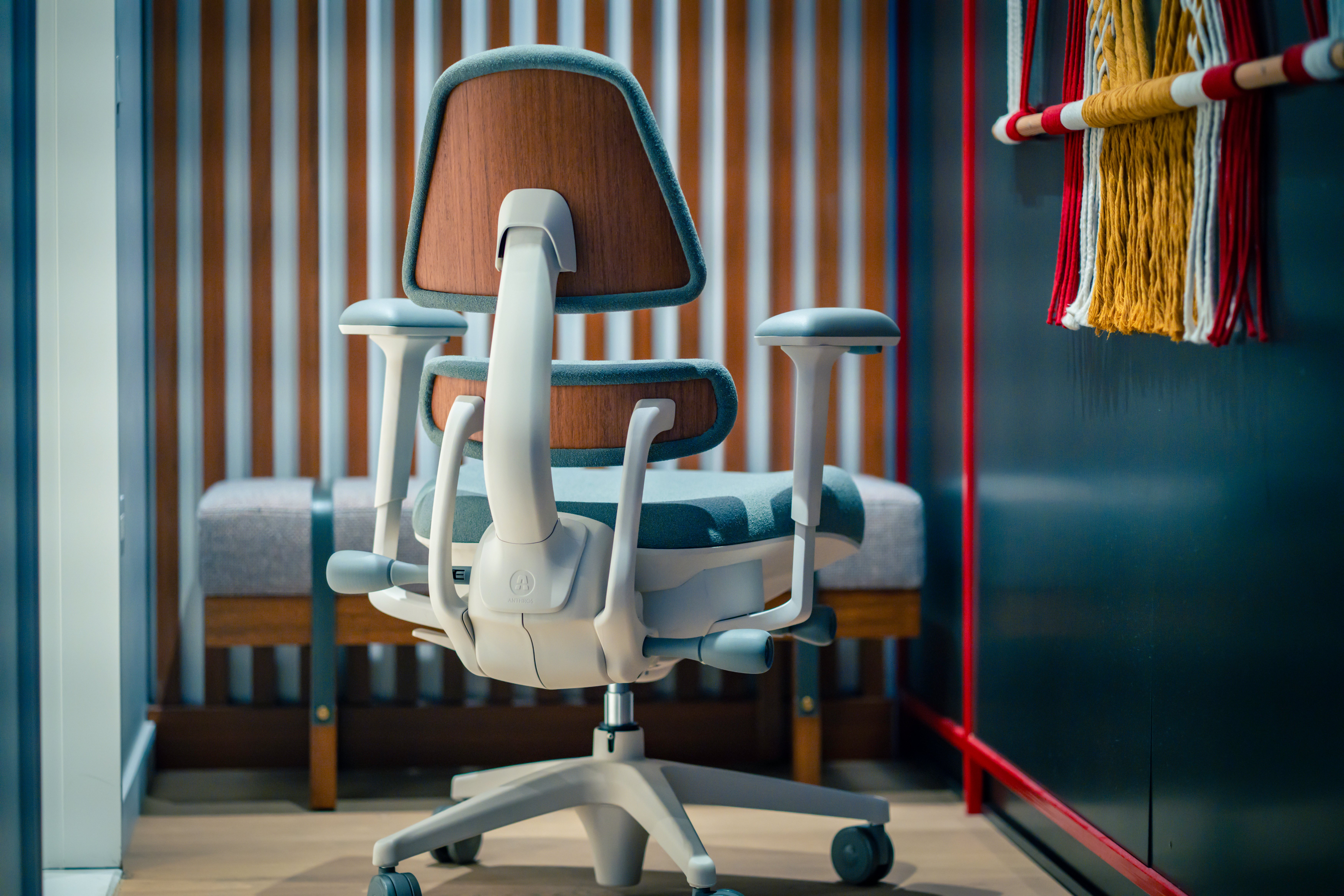Poor posture is an epidemic and can worsen over time, causing back, shoulder and neck pain. It’s not too late to address these postural issues and stand up straighter.
What is good sitting posture?
Good sitting posture is being mindful of the ideal alignment of your body. It’s more than just your mother yelling at you to “Sit up straight, Ashley!” It is attempting to position your body in such a way as to put the least strain on your muscles, ligaments, and joints.
With the average office worker spending up to ten hours a day sitting, adopting the correct sitting posture is more important than ever. Keeping good/upright posture in sitting is hard, and the mis-aligned support of traditional office chairs makes it even harder.


Why is keeping a good sitting posture so hard?
In standing our pelvis is in a neutral position and that helps to position the spine in its four natural curves. When properly supported and with the pelvis in neutral, a strong and healthy spinal posture should look like an “S”. This posture creates increased disc space and allows the muscles to relax in this stable position. When we go from the standing position to sitting, we are at a mechanical disadvantage as the pelvis is the first to fall/rotate backwards naturally and the spine flattens.
In order to maintain this “S” curve in sitting, the abdominal and back core muscles need to be engaged. When sitting unsupported in a traditional office chair, the body fatigues and assumes a slumped posture.
How can an office chair affect your posture?
Let’s go back to science class and learn about the SAID Principle. The SAID Principle is an acronym that stands for “Specific Adaptation to Imposed Demand,” meaning that our bodies adapt to a poor or good posture in sitting as maintained for a long period of time. The body adapts to the imposed demands (gravity and support of the office chair) placed upon it by sitting throughout your workday. So, if an office chair doesn’t support you in the right places in a good posture, then you can develop muscle imbalances and ultimately pain.
If incorrect postures become a habit at an early age, individuals maintaining those postures may adapt and consider them comfortable, and this can cause strain on the spine, pelvis, muscles, tendons, joints, bones, and discs, which can lead to fatigue and deformation1.
Muscle Imbalances
Results of Upper Muscular Imbalance
When sitting for long periods every day, there are muscles that shorten and get tight (upper traps, levator scapulae, and pectoralis) and if held for long periods, can develop adhesions, resulting in tight weakness. Tightness of these structures and weakness of the lower trap and neck flexors elevate and round the shoulder girdle, causing the forward-head appearance.
The weakened neck muscles and back muscles result in a forward head posture and “C” shaped spine.


Results of Lower Muscular Imbalance
Sitting for long periods can also cause muscle imbalance in the lower body. The muscles that are typically tight are the erector spinae and hip flexors. The weakened muscles are typically the abdominals and gluteal muscles.
What’s the key to good sitting posture?
Our best sitting posture is to mimic proper standing posture. Remember the first part of the body that falls when moving from standing to sitting? The pelvis! Traditional office chairs use a lumbar support to help hold the spine in the upright posture. The lumbar support, however, only pushes into the spine and is too high to hold up the rest of the spine above it. You must start from the root of the problem at the base of the spine.
The shape of the lumbar spine when sitting depends directly on the position of the sacrum connected to the pelvis. The support should be given to the pelvis, not the lumbar spine2.
But fear not! We've got a solution that will make sitting with good posture a breeze. Anthros is designed to support your pelvis and upper back independently with a dynamic tapered upper back and lower back support. This helps naturally restore the "S" curve of your spine, reducing stress on your back and aligning your muscles in balanced alignment. Plus, Anthros can be adjusted incrementally to gradually reduce muscle imbalances and restore an upright posture. It's like having a personal posture coach built into your chair!
So, if you’re looking for a chair that can help improve posture, look no further than Anthros.
Anthros is the only chair in the world that is guaranteed to improve posture or your money back. The science-backed, patented design is registered with the FDA as a posture-improving chair and is proven to have the lowest pressure (most comfortable) cushion on the planet (verified by university testing).
Take the next step to reducing pain, increasing comfort, and maximizing performance!
Recent Post

Exercises to Avoid With a Herniated Disc
March 6, 2025A herniated disc can put a serious damper on...

Gentle Back Exercises for Lower Back Pain & Herniated Discs
February 17, 2025Adding a cushion to your office or gaming chair...

Bulging Disc vs. Herniated Disc:
February 5, 2025Adding a cushion to your office or gaming chair...









